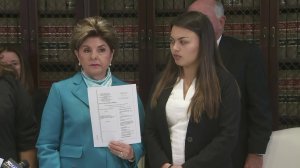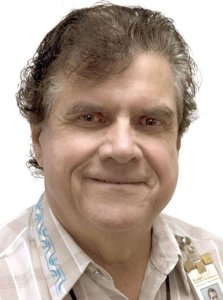Seven women have come forward in four separate lawsuits against the University of Southern California and its long-time gynecologist, George Tyndall, who resigned last year and is now at the center of still-unfolding scandal.

One plaintiff is being represented by celebrity attorney Gloria Allred, who spoke alongside her client at a news conference Tuesday. The plaintiff, graduate student Daniella Mohazab, described in graphic detail her interactions with Tyndall.
She said she sought care from Tyndall on April 14, 2016, for a sexually transmitted disease test. She described Tyndall as having a “creepy smile” and making her feel “extremely uncomfortable and violated.”
Mohazab said that when Tyndall learned she was Filipina, he remarked that Filipina women are “good in bed.”
“Without a glove, he put two fingers in me and felt around. He said, ‘I think we better use some lube,’” Mohazab said.
Tyndall, 71, operated as the only full-time gynecologist on staff at the university’s student health center, where complaints have been lodged against him since the 1990s, according to a Los Angeles Times investigation that brought the case to light last week.
Among the first allegations against Tyndall were that he unnecessarily photographed patients’ genitalia. After a complaint from a member of the clinic’s nursing staff reached the health center’s former executive director, Lawrence Neinstein, the camera was no longer used.

But the complaints continued. The Times revealed that eight other complaints were made against Tyndall from 2000 to 2014.
Mohazab’s accounts are consistent with the other victims’ claims.
In a lawsuit filed Monday by Orange County attorney John Manly, four anonymous women reported being groped by Tyndall during procedures. In another lawsuit, attorney Dave Ring is representing a victim going by the name of J.C. who was allegedly subject to an inappropriate comment from Tyndall during an exam.
“Oh, you are really tight. You must be a runner,” Tyndall is accused of telling J.C.
A class-action lawsuit was filed in federal court Monday by attorneys Steve Berman and Christopher Pitoun. The victim in that case, Lucy Chi, alleged that in 2012 she was penetrated by Tyndall who “moved his fingers in and out of her vagina, saying he wanted to check whether the speculum would fit.”
Despite her telling him it was unnecessary, Tyndall “insisted” his action would help prevent discomfort, the complaint stated.
Upon leaving the 15-minute appointment, Chi reported seeing a female chaperone waiting outside of the room. The chaperone, a clinic staff member, asked Tyndall why he had proceeded with the appointment without her present, according to the lawsuit. Tyndall replied by saying that Chi had given him consent, which made it seem “as if the violation of protocol and standard of care was Chi’s fault,” the complaint said.
In 2013, eight members of the clinic’s staff complained about Tyndall, and Neinstein sent the complaint to the USC Office of Equity and Diversity. An investigation concluded that there was no violation of school policy, the Times reported. Neinstein died in 2016.
Nurse Cindy Gilbert, who was one of the eight staffers in the 2013 complaint, again reported Tyndall in 2016 by going to the campus rape crisis center, prompting another internal investigation. This time, however, Tyndall’s behavior was determined to be inappropriate and his actions consistent with sexual harassment, the university told the L.A. Times.
Mohazab said the situation should have been stopped long ago.
“USC knew of Dr. Tyndall’s misconduct before I was even born,” she said Tuesday.
Because Tyndall threatened to sue for gender and age discrimination, USC entered a settlement that Tyndall accepted at the last minute: He was allowed to resign in June 2017 with a financial payout — and without the misconduct allegations being reported to his patients or to the Medical Board of California.
Over the course of his nearly 30-year affiliation with the university, Tyndall treated tens of thousands of female students, many of whom learned of the allegations for the first time May 16 when the L.A. Times broke the story. That same afternoon, USC received 85 responses to a hotline set up for current and former students, Provost Michael Quick said in a letter in which he encouraged students to continue to call in.
The number of responses had risen to more than 200 by the end of the week, USC President C.L. Max Nikias said in a letter to the university community on May 18. That letter was sent out the day after the top staff at the clinic were fired, including the lead physician and clinical director.
Tyndall “should have been removed and referred to the authorities years ago,” Nikias wrote.
Now, an online petition that has gathered more than 2,400 signatures is calling for Nikias’ removal for his failure to inform both the California Medical Board and Tyndall’s former and current patients.
On Tuesday, 200 professors from USC also demanded Nikias’ removal in a letter to the university’s Board of Trustees. The board of 42 men and 17 women quickly affirmed its support for Nikias.






















